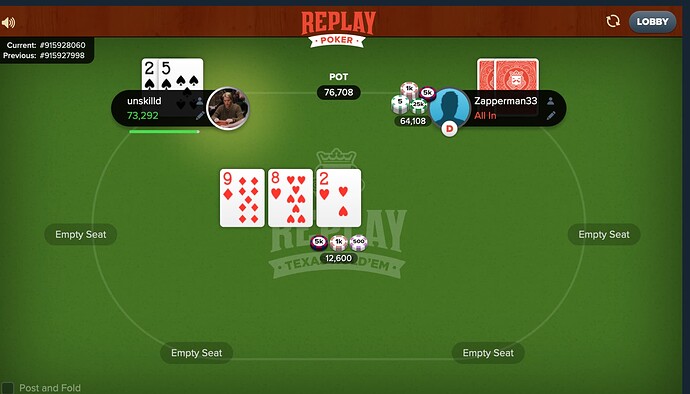Here’s a spot that just occurred where I made a call that seems a bit iffy against a normal range.
I open a bit wide under the gun in a 6 max table with As2s, which I probably wouldn’t recommend at this particular table, especially since CK had been 3 betting my raises at a pretty high cadence. CO cold calls my raise (probably not the best idea… choosing between raising or folding is probably better with most of his range in this seat on an aggressive table like this), and in the big blind, Dorkupine, also calls to close the action.
The flop is 2dJcAc, giving me a hand that should be ahead a fairly high percentage of the time (JJ would usually 3 bet and I block bottom set, leaving AJ has the most likely hand ahead of me). I make a moderately hefty continuation bet, and the cutoff (CO) calls and the big blind folds.
The turn is 9s, and I over-bet the pot, and the CO calls. With the call, I think I’m now often against flush draws, some straight or combo draws (even though the over-bet with only one card to go doesn’t leave implied odds that look too terribly attractive with the stacks remaining behind), and hands that beat me like AJ or a set of nines, with a sprinkling of marginal holdings that felt like getting sticky.
The river is the 3 of clubs, and most of the draws just got home. I check, and the CO goes all in for an almost pot sized bet.
I find that a lot of players on this site will not bluff the river nearly as often as they bluff other streets, and most of the hands that had been on a draw are now ahead of me anyway, and most of the non-flush hands that got here and make this bet should also be ahead of me. To call, I need someone that will make a lot of really thin value bets, or that will take hands that had been marginal value, and will now turn them into a bluff (or in some other way find a lot of bluffs in a spot like this).
To be honest, I think folding is probably usually the right play here, but for some reason my fold button didn’t seem to be working…
